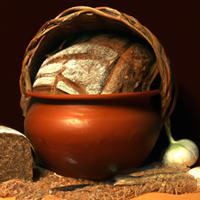
1 serving (43 grams) contains 110 calories, 4.0 grams of protein, 1.5 grams of fat, and 20.0 grams of carbohydrates.

Log this food in SnapCalorie

Nutrition Information
Calories |
611.1 | ||
|---|---|---|---|
% Daily Value* |
|||
| Total Fat | 8.3 g | 10% | |
| Saturated Fat | 1.7 g | 8% | |
| Polyunsaturated Fat | 0 g | ||
| Cholesterol | 0 mg | 0% | |
| Sodium | 1055.6 mg | 45% | |
| Total Carbohydrates | 111.1 g | 40% | |
| Dietary Fiber | 11.1 g | 39% | |
| Sugars | 16.7 g | ||
| protein | 22.2 g | 44% | |
| Vitamin D | 0 mcg | 0% | |
| Calcium | 277.8 mg | 21% | |
| Iron | 6.7 mg | 37% | |
| Potassium | 277.8 mg | 5% | |
* Percent Daily Values are based on a 2,000 calorie diet. Your daily values may be higher or lower depending on your calorie needs.
Food Attributes
Source of Calories
About Whole-grain white bread
Whole-grain white bread is a nutritious twist on traditional white bread, offering the softness and mild flavor of white bread with added benefits of whole grains. It is typically made with enriched flour and whole grains, such as whole wheat or other nutrient-rich grains, blended into the dough to provide a higher fiber content. A staple in Western cuisine, it pairs well with a variety of dishes, from sandwiches to breakfast toast. This bread is a healthier alternative to standard white bread, as it retains more nutrients and fiber thanks to the inclusion of whole grains, which support digestive health and help maintain balanced energy levels. While lower in fiber compared to 100% whole wheat bread, it has fewer nutrients stripped during processing than regular white bread, making it a balanced choice for those seeking a milder taste without fully compromising on nutrition.



